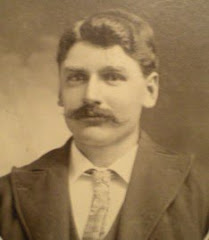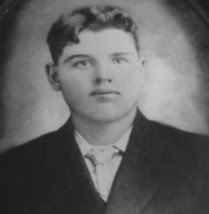Bracebridge L.O.L. 218
This lodge was officially organized on December 2, 1868, but Orangemen had held meetings in the area before this time. There was an Orange Parade in Bracebridge as early as 1866. This view finds support in a special edition of the Bracebridge Gazette, published in 1906. The writer describes the hamlet as it appeared about 1866 including the fact that "crossing the bridge the first building to the right was the Orange Hall...." Whatever the case, L.O.L. 218 is among the oldest functioning community institutions. It ranks with the postal service [1864], education [1866], religion [1861], and the municipality itself [1868].
The first Orange Hall was a real community centre in the pioneer days. Methodists and Anglicans used it for church services, socials and concerts. The hall was a meeting place for school board, municipal council and many other meetings. The inaugral session of the Village of Bracebridge Council met there on January 19, 1875. The first issue of the Muskoka Herald was published on April 11, 1878 in a room at the back of the Orange Hall. The Bracebridge lodge was a bastion of Orange strength and influence in Muskoka. Its members were numerous [since 1882, 525 men have joined; before that the records are incomplete] and noteworthy.
Thomas McMurray the first Reeve of the United Townships of Draper, Macaulay, Stephenson and Ryde, David Edgar Bastedo and George W. Boyer were all associated with newspaper publication. The first District Judge of Muskoka, W.C. Mahaffy [whose tenure of duty ran from 1886 to 1912] and William Lowe, the Inspector of Colonization Roads for Muskoka both became members of L.O.L. 218 in 1911. James Boyer, who was village clerk from 1875 until 1889, began his active Orange career in Bracebridge in 1876, At times, all members of the Macaulay Township Council were Orangemen, many associated with the Bracebridge Lodge.
The lodge could even claim priests among its membership! Walter H. Frith [1915] and Robert H. Loosemore [1936] of the Society of St. John the Evangelist [S.S.J.E.] were active Orangemen. A silk Union Jack and a leather-bound bible are still in use by the lodge, gifts from Father Frith. Captain Cornthwaite of the Salvation Army and Reverend F.L. Brown of the Methodist Church were active in the lodge.
Some of the well known personalities of the town who were members included T.J. and Wilbur Anderson [merchants], Harry Boyer [monument works], George and Frank Crozier [merchants], William R. Fisher [florist], Alfred Hunt [banker], Wilbert Richards [town clerk], William J. and W.W. White [undertakers]. None ever came close to the devotion of James Clark of Macaulay Township. Born on July 12, 1839 in County Tyrone, Ireland he joined the Orange Society on his 17th birthday and never missed a celebration of the Battle of the Boyne[until?]1932. His obiturary claimed that his record of attendance at Twelfth celebrations was probably unequalled in Ontario.
Clark's life was one of community interest. He was a hunter of big game and founded the Spring Lake Hunt Camp. He was councillor in Macaulay Township for 30 years, postmaster of Monsell for 42 years and laid the cornerstone for the Purbrook Anglican Church and served as Church Warden for many years. Men of professional influence joined the lodge as well. The first medical doctor in town, J.N. Byers was a member, and in the 1890's, Dr. R.N. Topp was a member and held the position of lodge physician. He was paid $55.00 a year to physically examine every candidate for membership.
Gary Denniss
(Click on title for source website)
Saturday, July 24, 2010
Subscribe to:
Post Comments (Atom)











No comments:
Post a Comment